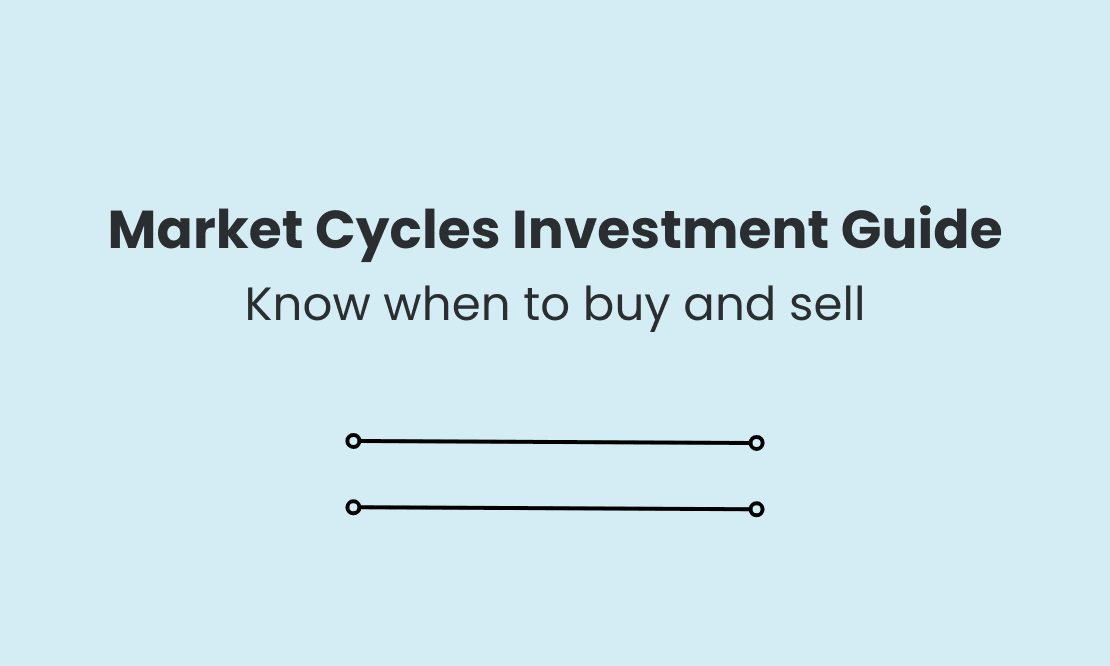The Four Phases of Market Cycles Explained
Market cycles are a fundamental aspect of investing, influencing asset prices, investor sentiment, and economic conditions. Understanding these cycles can help investors make informed decisions on when to buy and when to sell. This article explores the phases of market cycles, their characteristics, and strategies for maximizing investment returns.
The Four Phases of a Market Cycle
Market cycles typically consist of four key phases, each with distinct characteristics that signal different opportunities and risks for investors.
1. Accumulation Phase
- This phase occurs after a prolonged market downturn or crash when prices have stabilized at low levels.
- Sentiment remains largely negative, with pessimism still prevailing in the market.
- Smart investors, including institutional players and experienced traders, begin accumulating assets at discounted prices.
- Economic indicators may start showing early signs of recovery, but mainstream media remains sceptical.
- Strategy: Investors should focus on buying undervalued stocks, bonds, or other assets with strong fundamentals and long-term growth potential.
2. Markup Phase
- Market confidence begins to grow as asset prices show steady upward movement.
- Institutional and retail investors enter the market, driving up demand and further pushing prices higher.
- Media coverage turns more positive, and economic data improves, reinforcing the bullish trend.
- This phase often features breakouts from previous resistance levels, attracting even more investors.
- Strategy: Continue accumulating strong assets, but also set stop-loss levels to protect profits. Holding positions while allowing gains to compound is a wise approach during this phase.
3. Distribution Phase
- The market reaches peak optimism, and assets are often overvalued relative to their intrinsic worth.
- Experienced investors and institutions begin offloading their holdings to retail investors who are chasing gains.
- Public sentiment is euphoric, with excessive media hype surrounding investments.
- Signs of slowing momentum appear, with increased volatility and uncertainty in price movements.
- Strategy: Gradually take profits by selling overvalued assets. Rebalancing the portfolio and moving capital into more stable or defensive investments can help mitigate risks.
4. Decline (Markdown) Phase
- Market sentiment turns negative, and fear dominates as prices decline sharply.
- Panic selling occurs, leading to further losses, and economic indicators show signs of deterioration.
- Many retail investors liquidate their holdings at a loss, exacerbating downward pressure on asset prices.
- This phase can be triggered by economic recessions, financial crises, or external shocks such as geopolitical events.
- Strategy: Preserve capital by reducing exposure to highly volatile or speculative assets. Holding cash or reallocating investments to defensive sectors like utilities and consumer staples can be beneficial. Investors should also watch for signs of the next accumulation phase.
When to Buy
- During the accumulation phase, when prices are low, market sentiment is negative, and institutions begin buying.
- After significant market corrections, especially for fundamentally strong stocks or assets that have been oversold.
- When macroeconomic indicators, such as GDP growth, employment data, and corporate earnings, show signs of improvement.
- When valuation metrics, like the price-to-earnings (P/E) ratio, indicate that assets are trading at attractive discounts compared to historical averages.
When to Sell
- During the distribution phase, when valuations are at their peak and sentiment is overwhelmingly bullish.
- When asset prices rise too quickly without fundamental support, signalling potential market bubbles.
- If technical indicators, such as declining trading volumes or bearish divergence, suggest a slowdown in price momentum.
- When macroeconomic indicators, like rising inflation or interest rates, point to an upcoming market downturn.
Conclusion
Recognizing market cycles helps investors make rational, well-timed investment decisions rather than reacting emotionally to price movements. Understanding these phases enables investors to buy low and sell high, maximizing returns while managing risk effectively.
At TradeVest Securities, we provide expert guidance to help investors navigate market cycles and optimize their financial strategies. Stay informed, stay patient, and invest wisely!









